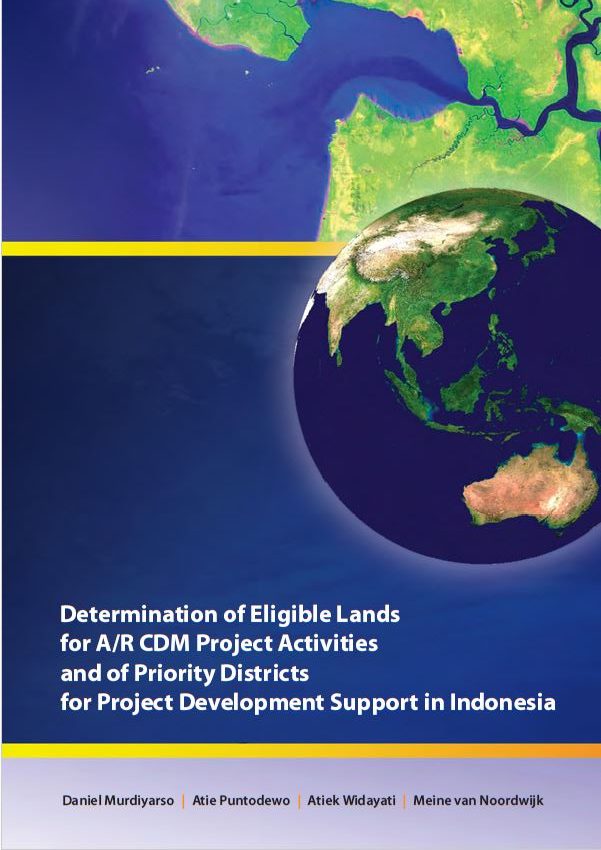Based on the best available remote sensing data from before 1990, the total area of formally eligible lands in Indonesia for the aff orestation and reforestation (A/R) Clean Development Mechanism (CDM) activities under the Kyoto protocol is about 46 M ha. Priorities for assistance in the development of A/R CDM project activities may use criteria based on (i) the Human Development Index (HDI), which is focused on districts with below-average HDI; (ii) population density, which is in the range where the land/labour ratio is conducive to profi table tree-based farming systems; and (iii) Fire Risk Index (FRI). Overall the lists for Java, Sumatra, Kalimantan, Nusa Tenggara, Sulawesi, Molluca, and Papua that meet these criteria involve 302 Districts, 195 M ha of total area in the districts with 48 M ha of ‘eligible Kyoto lands' and 158 M people and a mean HDI of 64.7. Th e mean of district-level population density is 293 persons/km2 and the mean FRI is 0.086. When a ‘default' setting of the criteria (minimum 15% of eligible lands in the district, population density between 10 and 100 persons/km2, HDI below 65), we obtain a priority list of 60 districts (20% of the total). Th is priority lists involves 46 M ha in the districts (24% of the total) with 19 M ha of ‘Kyoto lands' (40% of the total) and 19.5 M people (12% of the total) and a mean HDI of 62.9 (refl ecting the ‘pro-poor' prioritisation), mean of district-level population density of 53 persons/km2 (the larger districts tend to have lower densities) and mean FRI of 0.135 (60% higher than for the set as a whole).
View source

